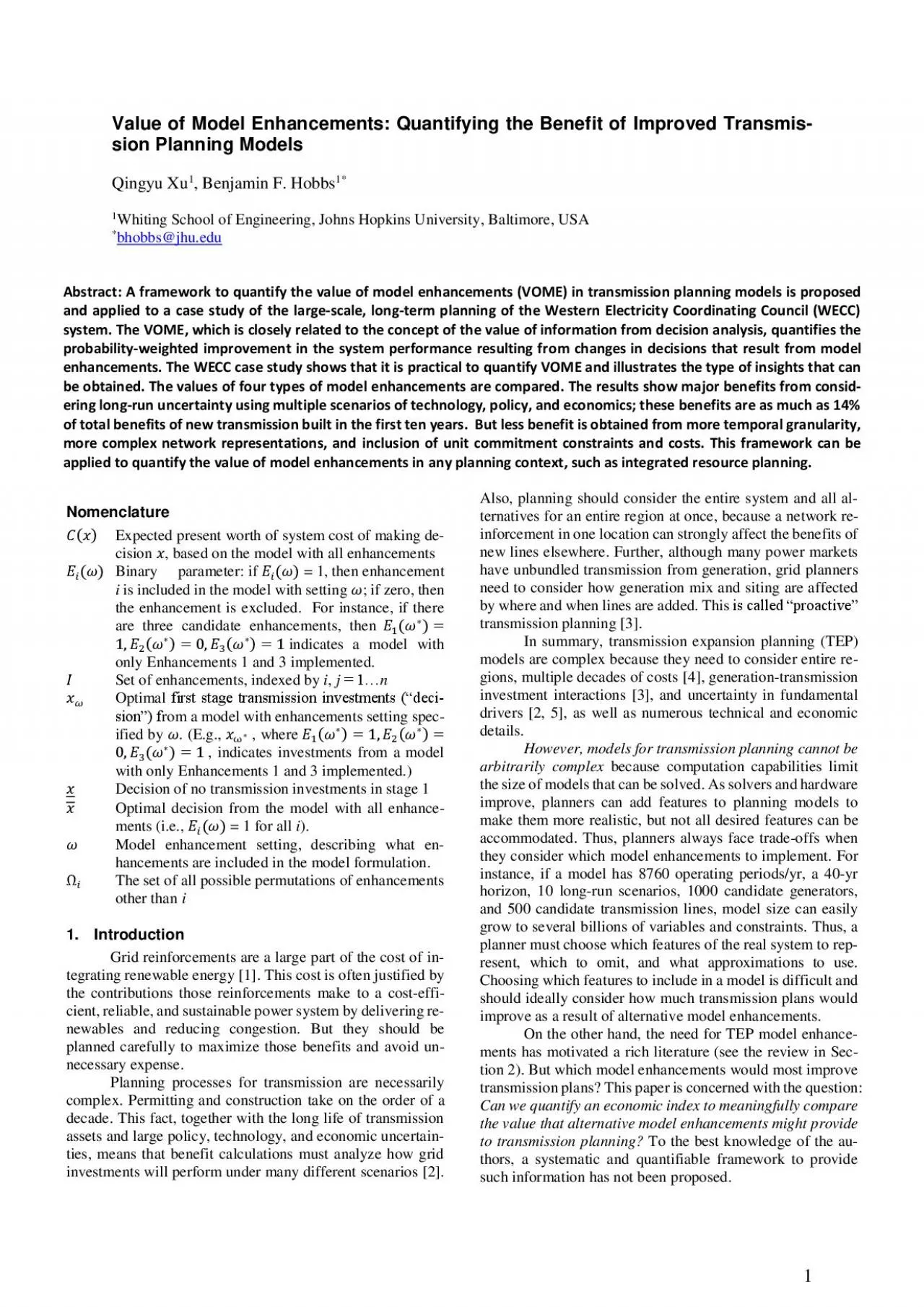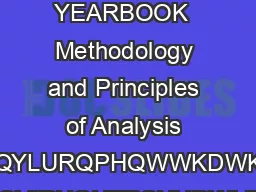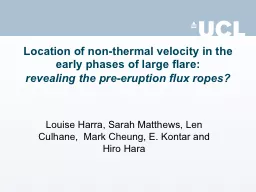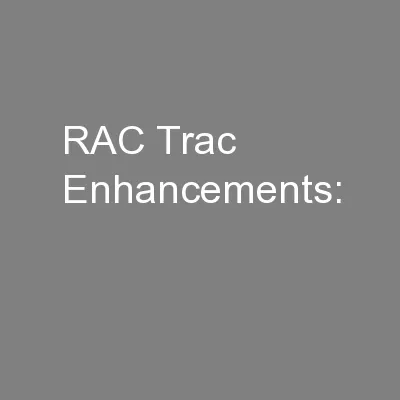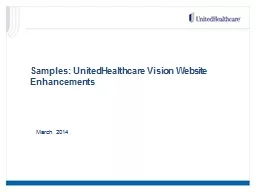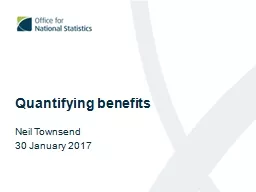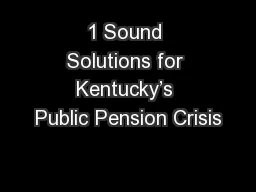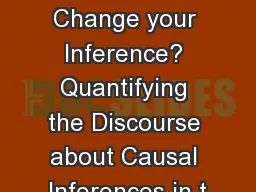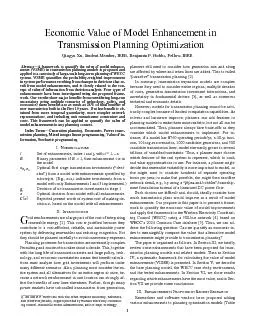PDF-Value of Model Enhancements Quantifying the Benefit of
Author : joanne | Published Date : 2021-08-27
1ImprovedTransmission Planning ModelsQingyu Xu1Benjamin F Hobbs11Whiting School ofEngineeringJohns Hopkins UniversityBaltimoreUSAbhobbsjhueduAbstractA framework
Presentation Embed Code
Download Presentation
Download Presentation The PPT/PDF document "Value of Model Enhancements Quantifying ..." is the property of its rightful owner. Permission is granted to download and print the materials on this website for personal, non-commercial use only, and to display it on your personal computer provided you do not modify the materials and that you retain all copyright notices contained in the materials. By downloading content from our website, you accept the terms of this agreement.
Value of Model Enhancements Quantifying the Benefit of: Transcript
Download Rules Of Document
"Value of Model Enhancements Quantifying the Benefit of"The content belongs to its owner. You may download and print it for personal use, without modification, and keep all copyright notices. By downloading, you agree to these terms.
Related Documents

